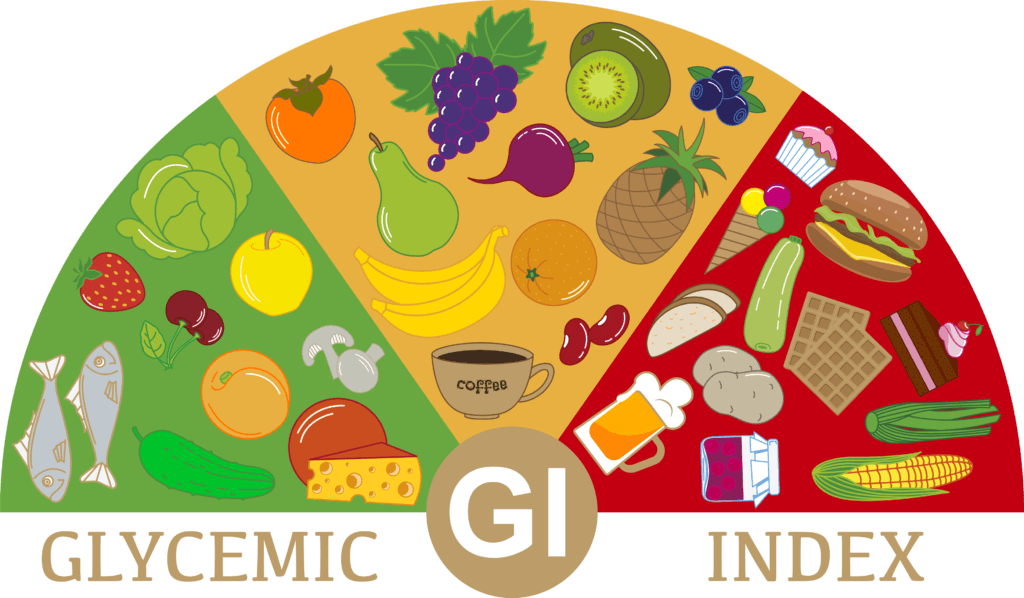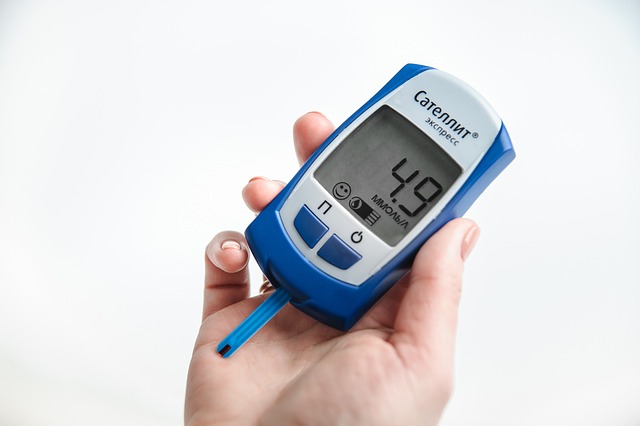The time has come to rethink what you thought you knew about carbohydrates if you thought all are the same. Instead of following a low-fat, high-carbohydrate diet that was popular decades ago, or avoiding nearly all carbohydrates with a low-carbohydrate diet, you can take a more moderate approach by choosing the "good" carbs using the glycemic index.
The glycemic index, or GI, is one tool you can use to choose your carbohydrate sources. It can guide you towards selecting healthier foods, and following a diet based on the GI may help you lose weight, control your blood sugar, and improve energy levels.
What Is the Glycemic Index?
Many foods have types of carbohydrates known as sugars and starches. When you eat foods with any of these types of carbohydrates, your body breaks down the carbohydrates into a type of sugar called glucose.
The glucose goes into your bloodstream. Insulin helps the cells in your body remove glucose from the bloodstream and use it for energy, while excess glucose eventually gets stored as fat.
The glycemic index is a measure of how fast the carbohydrates in food enter your bloodstream.
Slow Acting Carbs
Some carbohydrates are more difficult to break down, and the glucose enters your bloodstream more slowly. These carbs have a low GI and are considered "slow-acting carbs."
Fast Acting Carbs
Other carbohydrates are quick to break down, and the glucose enters your bloodstream sooner after eating the food. These carbs have a high GI, and are "fast-acting carbs." A low-GI diet is often considered "better" than a high GI, but there are some circumstances when a high-GI food can be helpful.
Blood Sugar Management
Since the glycemic index describes how quickly your body processes carbohydrates from food and turns them into blood glucose, knowing about the GI can help you manage blood sugar. High-GI foods can be more challenging for your body, since they lead to rapid spikes in your blood glucose levels and demand a lot of insulin. If you have prediabetes or type 2 diabetes, these bumps in blood glucose can be more than your body can handle properly.
On the other hand, low glycemix index foods can help you prevent these intense spikes, since blood glucose rises more slowly after eating a low-GI food. By choosing lower-GI foods, you can help your body's insulin, and any insulin you may be taking from medications, keep pace with the demand.
Glycemic Index Definition
The glycemic index of a food is a number. This numeric value indicates how fast the carbohydrates in that food are broken down into glucose compared to a reference value, usually the GI of glucose or white bread, which is another fast carbohydrate. Only foods with carbohydrates have a GI; fat and protein do not.
You cannot know the GI of a food without looking it up, but you can make a good guess about which foods might have a higher or lower GI than other foods. Here are some general patterns.
- Protein and fat tend to lower the glycemic index
- Fiber is a type of carbohydrate, but your body cannot digest it, and fiber tends to lower the GI
- Processes such as cooking, mashing, and juicing tend to raise the GI
- Less processed foods, such as whole grains, tend to be lower-GI than more processed foods, such as refined grains like white bread and pasta
Glycemic Load Definition
The glycemic index of a food considers how fast the carbs in the food break down, but it fails to consider another important factor: how many carbs there are. To see intuitively why the amount of carbs is important, compare cooked carrots, with a high GI of 70, to peanut M&Ms, with a moderate GI of 47. Based on that information alone, you would think that candy is a better choice.
However, when you consider the amount of carbs in each food, you get a more accurate picture. The glycemic load, or GL, multiples the GI by the amount of carbs in the food. The GL carrots is only 21, while the GL of a 2-ounce package of M&Ms is 110!
Glycemic Index Calculator
The glycemic index many foods have been determined through experiments to see what the effect of that food is on people's blood glucose levels. You can find the GI of these foods and estimates of the GI of other foods using a GI calculator. There are several available online, such as one at Shape.
Glycemic Index Foods List

There are also many GI Foods Lists available online. You can use a glycemic index chart to quickly see the GI and often the GL values for different foods. Often, a GI Foods List is organized by food group or by low, medium, and high GI foods.
Low Glycemic Index Foods
Low-GI foods are often less processed, and higher in protein, fiber, fat, and/or complex rather than refined carbohydrates. Examples include:
- Non-starchy vegetables, such as lettuce, tomatoes, broccoli, and mushrooms
- Cherries, grapefruit, and pears
- Legumes, such as beans, split peas, and lentils
- Nuts and peanuts
- Whole grain pasta, oatmeal, and barley
Medium Glycemic Index Foods
Medium-GI foods are somewhere between low and high-GI foods. Examples include:
- Sweet corn and winter squash
- Bananas, kiwi fruit, and mangos
- Bran cereal, Total, muesli, and Cheerios
- Whole grain pasta
- Potato chips
- Pizza, burgers, and chicken and turkey sandwiches on white bread
- Ice cream
High Glycemic Index Foods
High-GI foods are often more refined, cooked, or otherwise processed, higher in simple sugars and/or refined starches, and lower in protein, fiber, and fat. Examples include:
- Baked and boiled potatoes.
- Cornflakes and sugar-sweetened breakfast cereals
- Watermelon
- White bread, pasta, and rice
- White crackers and pretzels
- Soft drinks
Glycemic Index of Fruits
Many people believe that they should avoid eating fruit because of its sugar, but fruits are among the healthiest foods you can eat. They not only have nutrients such as fiber, potassium, and a range of antioxidants, but are linked to lower risk for many diseases.
The best low GI fruits include:
- Grapefruits and oranges
- Strawberries and other berries
- Apples and pears
- Peaches, plums, and nectarines
- Sour cherries
The Glycemic Diet
The glycemic diet is, as it sounds, a diet based on the GI. Following a low GI diet means that when you eat foods with carbohydrates, you select those foods with a low GI. There are several potential benefits of a low GI diet.
- Weight loss: When you choose lower-GI foods, you may be getting more fiber, fat, and protein compared to fast-acting carbs such as sugars and refined starches. The result may be that you feel full for longer after you eat, so you tend to eat less at your next meal. That can help you lose weight.
- Better energy: A lower-GI diet means fewer and less dramatic spikes in blood sugar. At the same time, you do not get the subsequent dramatic drops in blood sugar and energy levels. This means your energy levels are more stable, and you may feel better.
- Lower blood sugar: Your blood sugar does not spike as much, and the response demands less insulin, when you choose low-GI foods. Better blood sugar control is especially good news if you have prediabetes or diabetes.
- Cardiovascular benefits: Lower-glycemic carbs tend to have more heart-healthy nutrients, such as fiber, which lowers cholesterol, and potassium, which lowers blood pressure. Plus, limiting simple sugars may help keep blood triglycerides in check.
Following a Low-Glycemic Diet with Lark
Following a low-glycemic diet may seem challenging if you have to look up the GI of each food you eat, but help is available. In addition to using apps that can tell you the GI of foods, you can use Lark Health Coach as another aid. Lark guides you to naturally choosing lower-GI foods and meals by:
- Encouraging whole, less processed foods.
- Supporting high-fiber carbohydrate foods.
- Assisting you with portion control, especially of high-carb foods.
- Reminding you to include GI-lowering nutrients, such as healthy fats and lean proteins, in your meals and snacks.












.webp)






